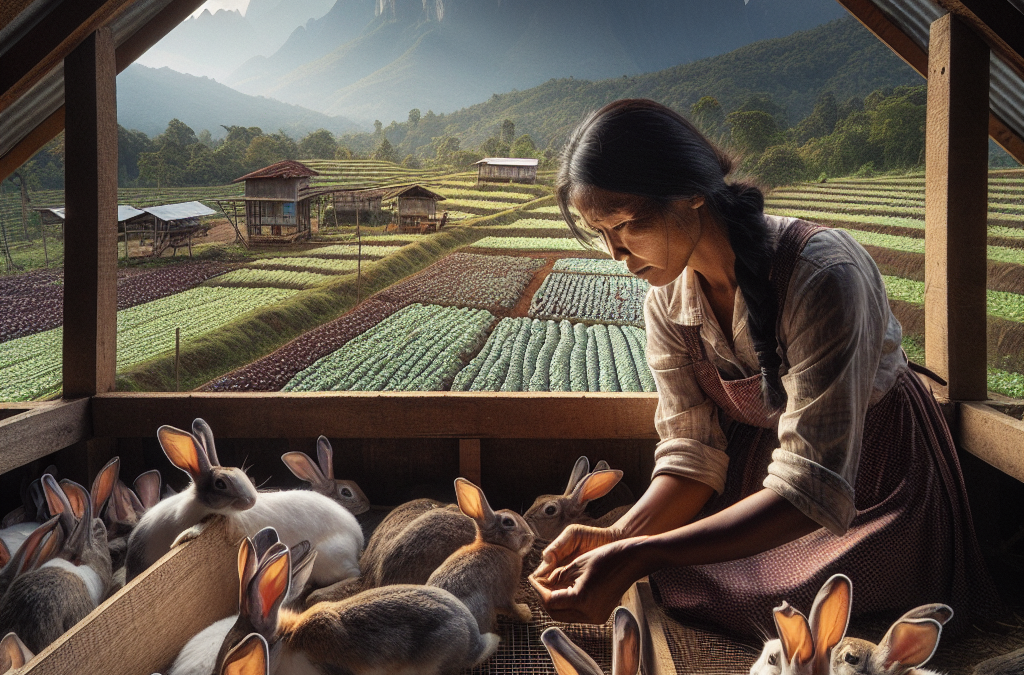Hey there! If you’re like me, you’re probably looking to live a more self-sufficient lifestyle, and raising rabbits for meat is one of the best ways to do that. In my journey of homesteading, I’ve learned a lot about these fluffy little critters and how they can be an incredible source of protein for your family. Let’s dive into the vital areas of raising rabbits for meat.
Choosing the Right Breed
Popular Meat Rabbit Breeds
When I first started out, I did a ton of research on different breeds. Some breeds are particularly well-suited for meat production. For example, the New Zealand and Californian breeds are quite popular among homesteaders like us. They grow quickly and have good bodies for meat yield.
Another breed you might want to consider is the Flemish Giant. I’ve seen them reach sizes that are pretty impressive, and they’re not just big; they can provide a substantial amount of meat. Just remember that they take longer to grow to that size!
There’s also the Rex breed, known for its beautiful fur and meat quality, a bonus if you’re into multi-purpose livestock. I love the variety, and it often comes down to what you think works best for your situation.
Assessing Your Space
Now let’s talk about space. Before you invest time and money, think about your available space. Rabbits need room to hop around and stay healthy, so I suggest allocating at least 30 square feet for a few rabbits in a hutch or run setup.
I’ve found that they thrive best when they have some outdoor time. A secure yard or garden area is great for them to get some exercise and enjoy fresh air. Yet, always ensure there are no gaps or holes, as rabbits can be escape artists!
Lastly, consider their shelter. A simple wooden hutch with proper ventilation is key for their safety and comfort. Remember to keep it clean and cozy!
Nutrition and Feeding
When it comes to feeding your rabbits, I can’t stress enough how important it is to provide a balanced diet. I like to use a mix of high-quality rabbit pellets alongside fresh vegetables. Carrots, leafy greens, and even some fruits make a great treat for the bunnies.
Don’t forget about hay! Timothy hay is a staple in my feeding routine; it helps with their digestion and keeps them from getting too chubby, which is super important if you want them to grow for meat.
Oh, and always keep fresh water available! Those little guys drink a lot, and I’ve found that a weighted water bowl works wonders in keeping the water fresh and minimizing spills!
Housing and Environment
Creating a Comfortable Habitat
Creating a comfy habitat for your rabbits has been a rewarding experience for me. I usually go with raised hutches that have wire floors for easy cleanup. These structures keep them safe from predators and give them a dry, warm place to sleep at night. It’s essential for their well-being!
Adding a nesting box is also key, especially if you’re planning on breeding. They love having a snug place to hide away and feel secure. Sometimes, I even add some straw or hay for bedding—my rabbits absolutely love it!
Also, keep their habitat shady during the hotter months. I’ve learned that rabbits can overheat quickly, and providing some shade or even a fan on hotter days can go a long way in keeping them cool.
Maintaining Cleanliness
Now, let’s chat about cleanliness. Keeping their space clean is essential not only for their health but also for mine! A dirty environment can lead to illnesses, so make it a routine to clean their hutch weekly. I usually scoop out old bedding and replace it with fresh hay.
If you’re using a litter box, I recommend paper-based litter—it’s absorbent and easy to clean. Plus, it’s a more eco-friendly option. I personally can’t stand dealing with odors, so that’s been a great solution!
Regularly check for any signs of health issues while cleaning; observing their waste can give you critical insights into their health status. It’s best to catch any issues early!
Breeding Considerations
If you’re thinking about breeding rabbits, congratulations! It’s an exciting venture. I’ve found that setting up a breeding schedule is a great way to keep track of everything. Ensure you have a healthy buck and doe to start.
Observe their mating process carefully. I’ve learned that sometimes, it takes several introductions before they’re ready to mate. Patience is key! Once they’re mated, you can expect a litter in about 30 to 32 days.
After they’ve given birth, make sure you provide extra care for the doe and her kits. A calm environment is crucial, and ensuring she has plenty of food is equally important. I often throw in extra greens to help boost her milk production.
Processing and Ethical Considerations
Understanding the Process
Processing your rabbits ethically is a sensitive topic, and I feel it’s important to approach it with care and respect. I’ve taken the time to educate myself on humane practices. It’s crucial to have a clean and quiet area for processing to minimize stress on the animal.
Before beginning, make sure you have all the right tools ready, including sharp knives, gloves, and a clean surface. Preparation is everything! I usually lay everything out in advance so I can focus on the task at hand.
After processing, it’s time to butch down the rabbit. It’s a skill I’ve had to learn through practice and patience, but it’s also incredibly rewarding to know where your food comes from firsthand.
Respecting the Animal
Throughout this process, I’ve learned the importance of treating your animals with respect. I try to connect with each one personally; after all, they’re not just livestock. I think about the life they’ve lived and the nourishment they provide.
It’s vital to ensure that they have a good quality of life throughout their time on your homestead. I always aim to provide love and care, from feeding to health checks. They deserve that, don’t you think?
Lastly, considering alternatives to processing, like sharing or donating, can also be a worthwhile discussion in your community. It creates a dialogue about ethical meat consumption.
Cooking and Recipes
Once you’ve gone through the butchering process, it’s time to enjoy the fruits of your labor! Rabbit meat is lean and flavorful, and there are tons of recipes out there. I love slow-cooking it with herbs and veggies; it’s tender and just melts in your mouth.
Don’t be afraid to experiment! I’ve found that marinating rabbit in vinegar or yogurt before cooking can enhance the flavor and tenderness. Plus, it’s a great way to mix up your usual meals.
Don’t forget about leftovers! Rabbit is very versatile; I’ve used it in stews, salads, and even pasta dishes. You’ll discover that it’s a welcomed addition to your kitchen, and you’ll feel great about providing sustainably.
Conclusion
Raising rabbits for meat has been an enriching experience that has connected me to my food sources like never before. From choosing the right breed to developing recipes that celebrate the meat, it’s a rewarding journey filled with learning and joy. I hope this guide helps you embark on your own homesteading adventure!
Frequently Asked Questions
1. What is the best breed of rabbit for meat?
The New Zealand and Californian breeds are often regarded as the best for meat production due to their fast growth rates and good meat yield. However, consider your resources and the size of your homestead when making your decision.
2. How much space do I need to raise rabbits?
A minimum of 30 square feet is recommended for a few rabbits, but more is always better. Ensure they have a clean and secure habitat for both shelter and exercise.
3. What should I feed my rabbits?
Provide a balanced diet of high-quality rabbit pellets, fresh vegetables, and unlimited hay. Proper nutrition is essential for their growth and overall health!
4. How do I process a rabbit humanely?
Prepare a clean, quiet space before starting. Use the right tools and techniques, and approach the process with care and respect for the animal. It’s important to research best practices thoroughly.
5. What are some popular recipes for cooking rabbit?
Rabbit is great in stews, pasta dishes, or even grilled. One of my favorites is slow-cooked rabbit with herbs and vegetables. Don’t hesitate to experiment—it’s versatile!





